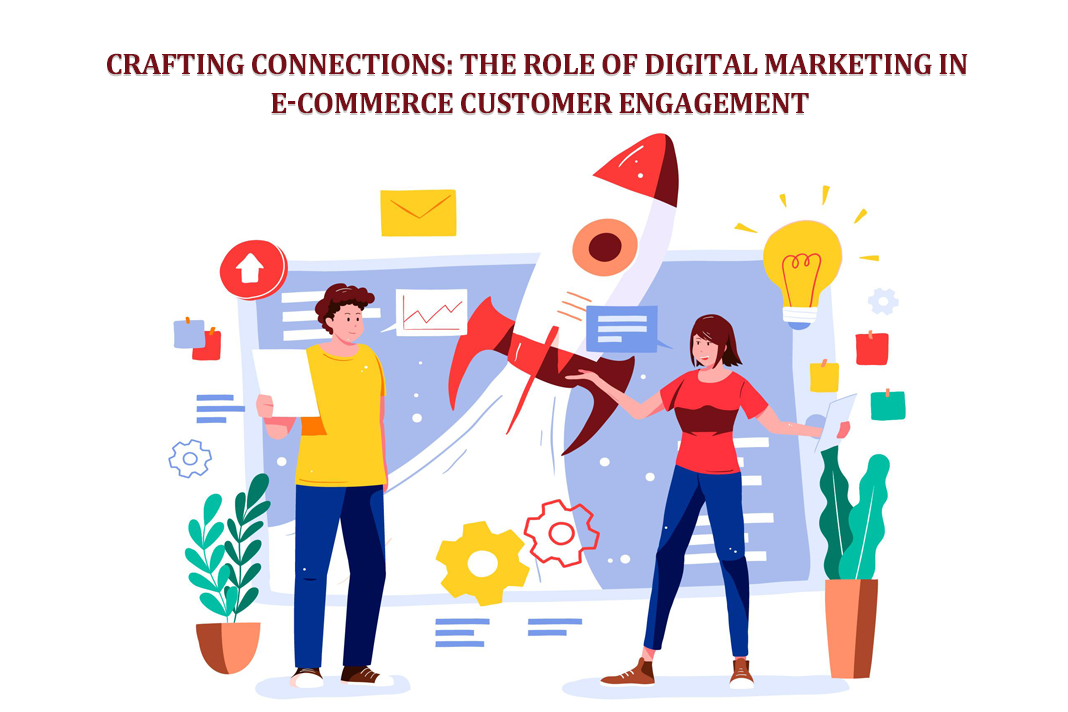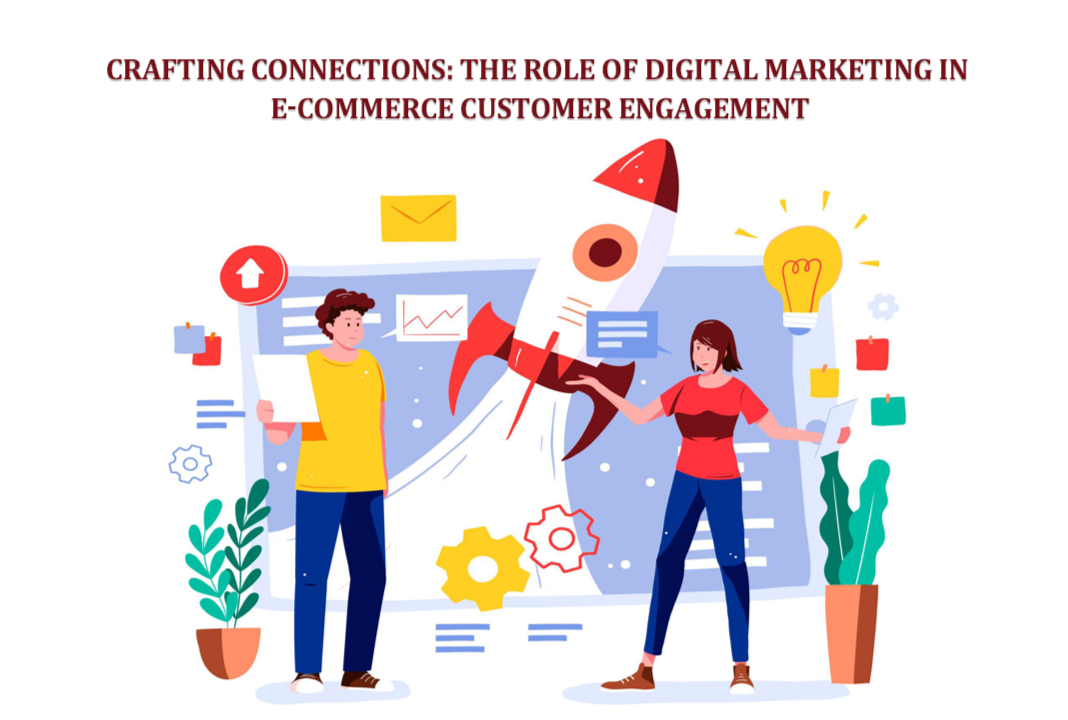
Crafting Connections: The Human Touch in E-commerce Customer Engagement
E-commerce relies on convenience and efficiency, but this is only true for some people. With the internet flooded with businesses, it's not enough just to have a user-friendly platform or good products. Now more than ever, customers desire human interaction—something that feels personal and connected rather than transactional. This is why digital marketing comes into play; it tells stories using innovative technology while also employing data-driven methods to create real connections with people who use your services or products, thus building loyalty among them.
The Evolution of E-commerce: From Faceless to Feeling
In the beginning, e-commerce was all about making transactions happen quickly. Buyers would flip through online catalogs until they found what they wanted, click "buy," and wait for their purchase to arrive at their doorsteps. That was then, though, because now things are different: shoppers expect brands to know who they are, anticipate what will make them happy, and build communities around shared interests, therefore creating for themselves personalized journeys towards becoming part of one big family where every member can feel valued equally much as anybody else does too. Through such understanding between businesses, sellers, and buyers – digital marketing plays its role in transforming customers into ambassadors for your brand, thereby ensuring sustainable success.
More Than Stories: Making People Care
Digital marketing has focused heavily on storytelling, but this needs to be done more than if any campaign wants to succeed in touching someone deep down inside them emotionally.
- Empathy Marketing: Tap into the human desire for connection. Understand your audience's challenges and frustrations, and showcase how your products or services offer solutions. Through relatable content and messaging, please demonstrate that you understand their needs.
- Embrace User-Generated Content (UGC): Don't just tell your brand story; let your customers tell it, too. Feature UGC, such as customer reviews, photos showcasing product use, or video testimonials. This authenticity resonates deeply with potential buyers who seek real-life experiences from people they can connect with.
- Interactive Experiences: Do not stick with non-moving content. Connect interactive quizzes, polls, or product customization tools to enable the audience to interact more deeply with you. Let them engage and personalize their relationship with your brand.
Omnichannel Engagement:
In today's digitally interconnected world, one should provide a seamless experience for customers across multiple touchpoints such as websites or mobile apps through social media platforms like Facebook Messenger up until online marketplaces as well as any other relevant channel that may arise in the future due to technological advancements which are yet unknown but can still be accounted for now while strategizing about omnichannel engagement where all these points should be considered so that they work together efficiently without conflicting against each other thereby creating confusion among customers who will eventually give up trying because it is too hard for them to understand what message was meant for whom at any given time hence losing interest altogether before long even if there might have been some potential benefits hidden behind such an approach.
The Power of Innovation: Emerging Technologies for Human Connection
- Artificial Intelligence (AI): Utilize AI-powered chatbots or recommendation engines for a more personalized customer journey. These tools can respond to basic queries, provide suggestions for products based on personal preferences, and deliver real-time support, creating a feeling of assistance and convenience. Augmented Reality (AR): Customers can virtually "try on" items or see them in their own space. AR apps can transform online shopping by bridging the gap between the digital and physical worlds.
- Virtual Reality (VR): VR experiences can provide immersive product demos or virtual tours in industries such as furniture or travel – allowing customers to form a stronger connection with the product and make informed purchase decisions.
Data-Driven Personalization: Making it Personal
When it comes to eCommerce, personalization is critical - especially with so much consumer data available.
- Dynamic Content: Use consumer data & browsing behavior to dynamically adjust each individual's site content, product recommendations, and email marketing campaigns.
- Micro-Influencer Marketing: Collaborate with micro-influencers social media personalities who boast smaller yet highly engaged followings.
- Retargeting Campaigns: Utilize website retargeting to remind customers about products they viewed but didn't purchase. This personalized approach keeps your brand at the forefront of their minds and encourages them to complete a purchase.
Creating a Community: Cultivating Loyalty After the Transaction
Ultimately, digital marketing is about building a community around your brand. Here's how you can do that:
- Advocate Programs: Turn your best customers into brand advocates by incentivizing them to promote your products or services on social media or through referrals.
- Interactive Social Listening: Use social media listening tools to actively monitor what people say about your brand and engage with customers. Respond quickly to questions or concerns, showing that you value their feedback and opening two-way communication channels.
- Cause Marketing: Partner with charities that reflect your company's values. This demonstrates social responsibility and appeals to consumers who want to support businesses that share their ethics.
Measuring Success: Tracking the Human Connection
While data is essential in the digital realm, it shouldn't overshadow the human side. Evaluating how well you're connecting with people online involves more than just looking at conversion rates or sales figures—you need metrics that indicate whether a real human connection has been fostered.
- Value of a customer throughout his lifetime (CLV) vs. Price of acquisition: Prioritize CLV over acquisition costs. Measure repeat purchase rates, average order value, and customer churn rate to ascertain how much you keep your customers and build long-term relationships with them. A high CLV means you have strong relationships with customers who will return repeatedly over an extended period, thereby spending more money each time they come.
Social Media Engagement: Look Beyond Follower Count
Social media can be a powerful tool for engaging with your audience. Unfortunately, when businesses concentrate on vanity metrics such as the number of followers, it tends to create an incomplete picture.
- Customer Satisfaction Surveys: feedback from customers directly using surveys that ask about their overall experience with the brand, how easy or difficult it was to navigate around the website, etc., as well as levels of satisfaction attained through customer service provided by different representatives at various stages along this journey towards realizing sales targets
- Customer Reviews and Testimonials: customers to leave reviews on your website, social media pages, and third-party platforms. Positive reviews build trust with potential customers and demonstrate how good you are already doing for those who have become part of your community.
By tracking these measurements with traditional e-commerce indicators of success, you can get a full picture of your digital marketing. Then, you can find out where you are doing well in creating human connections and where you can further personalize and enhance customer interactions. It's worth remembering that the human touch makes your brand different and encourages long-term customer loyalty in an era when everything can be automated through e-commerce. Try out plugins like WooCommerce Variable Pricing.
Conclusion
In conclusion, digital marketing has become the cornerstone for any successful business operating in today's online world, where customers have more power than ever before regarding their own experiences with companies. Whether it is personalizing initiatives or engaging across channels and continuously optimizing through ongoing conversations, all these strategies revolve around one thing: utilizing digital marketing as a tool for driving customer involvement within an increasingly connected society driven by data-driven decision-making processes such as those powered by artificial intelligence algorithms. Through creativity fueled by technology-driven data analytics capabilities, organizations should endeavor towards establishing meaningful relationships that drive continuous customer engagement, ultimately resulting in loyalty, thus ensuring sustainable growth amidst stiff competition witnessed within various sectors fueled mainly by technological advances that have transformed how people live work, play learn communicate transact business grow wealth.





